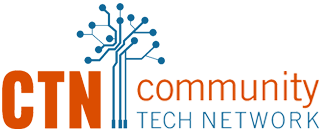Health information has increasingly moved to an online format, including information about prescription drugs, medical conditions, and healthy living. However, many older adults have difficulty accessing this information. Last week at the Aging in America Conference, Community Technology Network had the opportunity to highlight the work we’re doing to close the health literacy gap.
In a presentation called Surfing Your Way to Health and Wellness, we presented information about our eHealth Literacy workshop, which was developed specifically to help older adults access health and wellness information online. The curriculum is based on a pilot we conducted in 2014 and revised in light of feedback, observations, and evaluations. The workshops are led by trained volunteers and are being delivered at several SF Connected locations. Read more about the program here.
Here are other highlights from the conference.
- Telehealth Intervention Programs for Seniors (TIPS): A program offered at senior centers in Westchester, New York, uses technology and volunteers from Pace University to monitor vital signs, including blood pressure, pulse, oxygen levels and weight, and complete a social checkup to make sure seniors are aware of all the services and programs available.
- Ken Dychtwald from Age Wave spoke about Maturity Re-imagined. His talk provided staggering statistics about aging and the impact on society. By 2020, 25 percent of the overall population will be over 65. It is estimated that by 2030, 52 percent of the federal budget will be dedicated to Medicare and Social Security. He showed a great video by Hans Rosling that tells the story of the world over 200 years that plots life expectancy against income.
- Elder Services of Merrimack Valley in Lawrence, Massachusetts, is using a mobile app called Care at Hand that led to a 40 percent reduction in 30-day readmissions, which translated to a gross cost savings of $567,071 over six months.
- Jean Coppola from Pace University presented about several projects they are involved in that engage their students in service projects to help older adults utilize technology.
- Tom Kamber from Older Adults Technology Services (OATS) in New York City has helped thousands of seniors since their program started 11 years ago. The state has committed $50 million for broadband adaption statewide, and they are planning to roll out their program to seniors in rural New York.
- OASIS is a national education and service organization that brings people age 50 plus together to enrich lives and strengthen communities. Similar to CTN, they train volunteers to deliver computer training and support in their partner locations.
- SingFit is a music therapy app designed by music therapists to help dementia patients through singing.
The big takeaway for me was the crisis our country will face as baby boomers age. Some 10,000 people a day are turning 65, and this will continue for the next 15 years. There are simply not enough beds available in assisted living or retirement communities for everyone. It means that more people will have to age in place. And in order to do so, they will need to be connected to the Internet and have a device that allows them to do the things they need to do. They need to be able to communicate with friends and family, manage their health, order food, watch shows, listen to music, read newspapers, and so much more.
I am inspired now more than ever to continue our quest to help everyone gain the skills they need to use the Internet safely and independently.


Comments are closed.